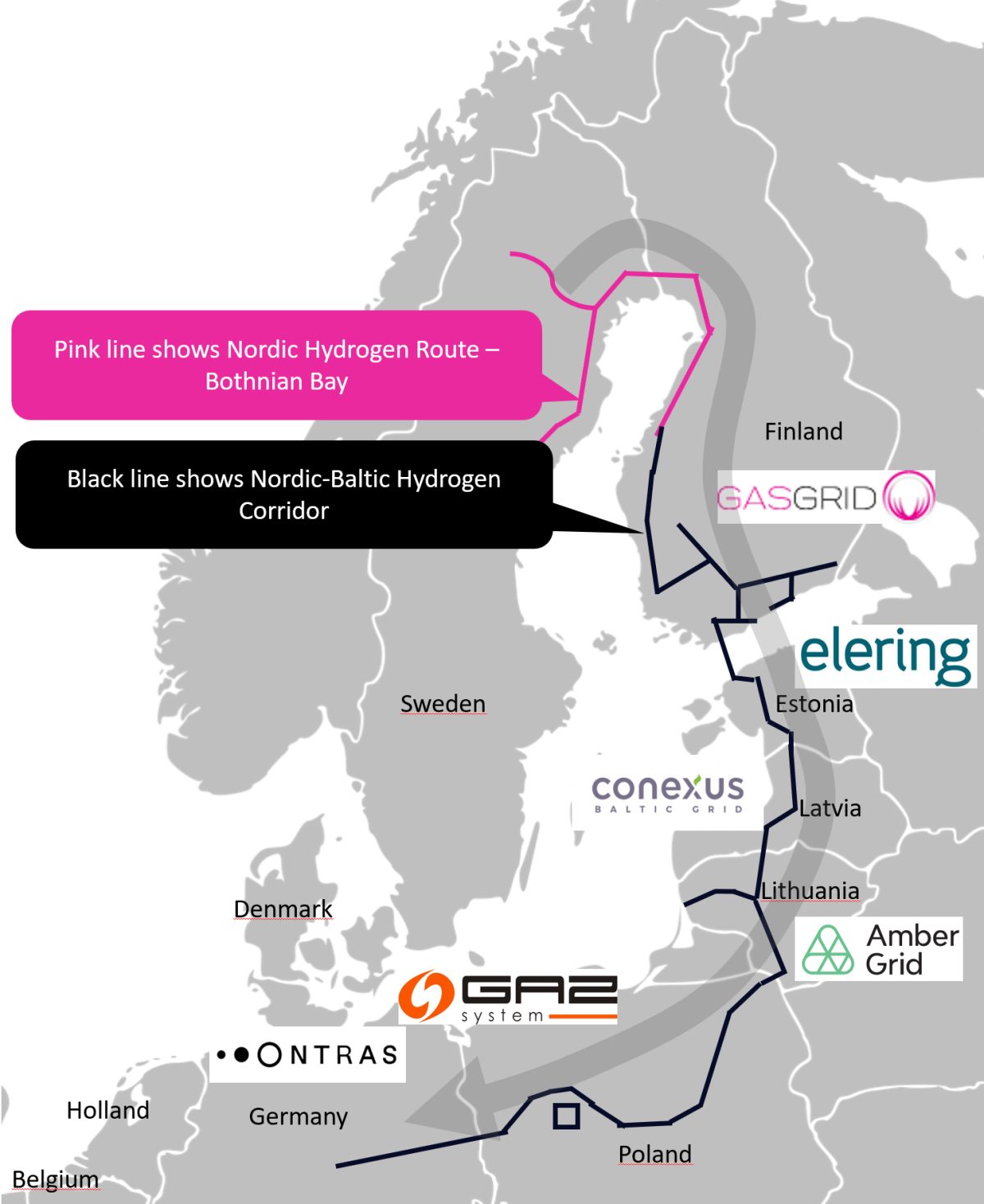Six North European transmission system operators (TSOs) have today launched projects to build two hydrogen pipelines from Finland and Sweden to Germany. One of the H2 pipelines will run from Finland via Estonia, Latvia, Lithuania and Poland to Germany. The other H2 pipeline will run from Finland and Sweden in the bottom of the Baltic Sea to Germany. Both networks will be connected to each other and the third network, Nordic Hydrogen Route, the hydrogen pipeline connecting the steel production areas in northern Sweden and Finland.
The corridor will strengthen the region’s energy security and reduce the dependency of imported fossil energy. It will play a prominent role in decarbonising societies and energy-intensive industries along the corridor. It also has significant potential to contribute to the EU’s greenhouse gas emission reduction.
Diversification of energy supplies
Nordic-Baltic Hydrogen Corridor supports diversification of energy supplies, and accelerated roll-out of renewable energy allowing in particular for achieving the EU target of 10 million tonnes of domestic renewable hydrogen production by 2030. The corridor can transport green hydrogen produced in the Baltic Sea area to supply consumption points and industrial clusters along the whole corridor, as well as in central Europe.
Renewable energy
In addition, when the hydrogen infrastructure develops further around the Baltic Sea, a strong market for hydrogen can be created enabling access to abundantly available and competitive renewable energy resources.
Taking into account the complexity of the project, project partners take proactive steps toward project implementation. In 2023, during the first phase of the project development, the project partners will conduct a pre-feasibility study.
Based on the pre-feasibility study recommendations, a decision on continuation of the project development would be made. Following phases in the project would include engineering and permitting phase, construction and commissioning.





